A Bright Future: Youth Health in Puerto Princesa
Puerto Princesa City, known for its stunning beaches and rich biodiversity, is also tackling a major public health issue: adolescent pregnancy. In 2019, the rising number of teenage pregnancies in the Philippines led the government to declare it a national social emergency. By 2020, the MIMAROPA region recorded 4,707 births among girls aged 19 and below. Palawan accounted for 32% of these cases, with Puerto Princesa contributing 397 births.
Mayor Lucilo Bayron saw the need to improve adolescent health services, particularly in reproductive health. His vision: investing in youth health today will build a stronger and more progressive city for the future.
A Citywide Approach to Youth Health
Puerto Princesa was among the first cities to join The Challenge Initiative (TCI) when it launched in the Philippines in 2020. TCI, a global program co-managed by the Zuellig Family Foundation (ZFF) and the William Gates Sr. Institute for Population and Reproductive Health, helps local governments implement and sustain reproductive health programs for the youth.
Working with the Commission on Population and Development (CPD) and the Department of Health (DOH), the city aimed to create a youth-friendly environment and lower adolescent pregnancy rates. The initiative strengthened partnerships among local government units, schools, health workers, and youth leaders, making reproductive health services more accessible.
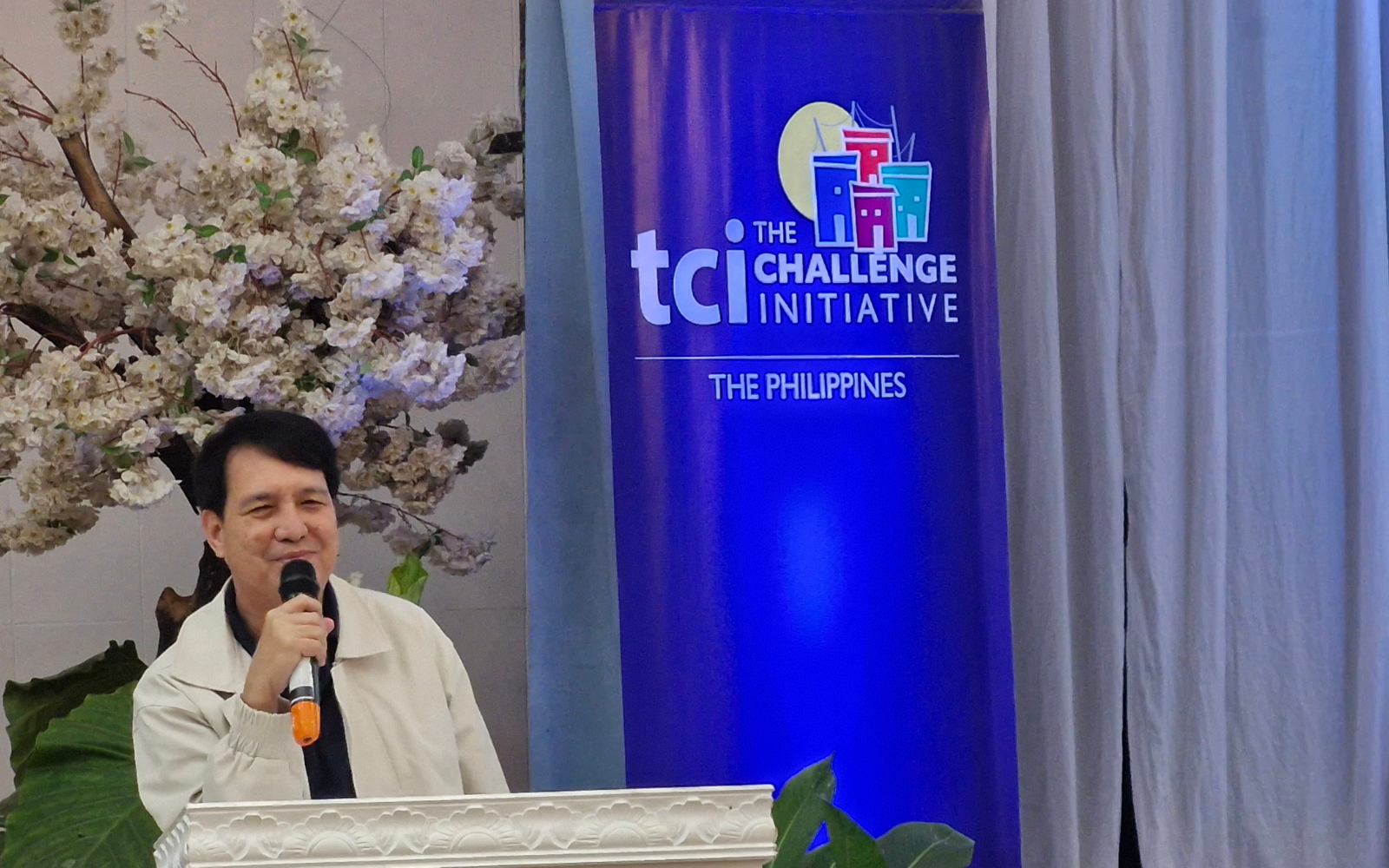
Strengthening Leadership and Coordination
To enhance collaboration, Mayor Bayron established the City Leadership Team (CLT) for Reproductive Health. This team, trained in governance and leadership, took charge of coordinating youth health programs. Analiza Herrera, Population Program Officer, said that TCI helped unify different efforts across city offices and partners, ensuring better service delivery without duplication.
A Referral System for Youth Services
Before TCI, many young people in Puerto Princesa did not know where to seek help for physical, mental, or sexual health concerns. Service providers also lacked a clear system for referrals. In response, the city created the Integrated Service Delivery Network (ISDN), linking agencies such as the City Health Office, City Social Welfare and Development Office, Ospital ng Palawan, the Philippine Mental Health Association, the police, schools, youth councils, and NGOs.
With this network in place, the city formalized the ISDN Referral Flow in November 2024, a guide for barangay leaders and health workers to connect youth to the right services.
Creating Safe Spaces for Youth
Youth involvement has been crucial in expanding health services. The Leadership for Adolescent and Youth-Friendly Cities (LAYFC) program gathered barangay leaders and youth representatives to identify local issues and solutions. One major result was the creation of youth-friendly spaces, including the “Barkada Hub” in Barangay San Jose. This center offers reproductive health services, counseling, and a safe place for young people to gather.
Today, Puerto Princesa has youth-friendly clinics in 8 satellite health centers, 11 schools, and 58 barangay health stations. Youth councils also organize educational sessions on reproductive health, HIV awareness, and family planning.
Using Technology to Improve Services
To address data gaps, the city launched the Comprehensive Household Information System (CHIS), an Android-powered app that collects real-time household data, including health and family planning information. CHIS, implemented in all 66 barangays, helps track adolescent reproductive health trends and identify areas needing intervention.
Sandra Guiyam, Population Program Officer, explained that CHIS provides accurate data to guide health programs, while Carlyn Badilla added that it ensures reliable records for women of reproductive age and family planning services.
Investing in the Future
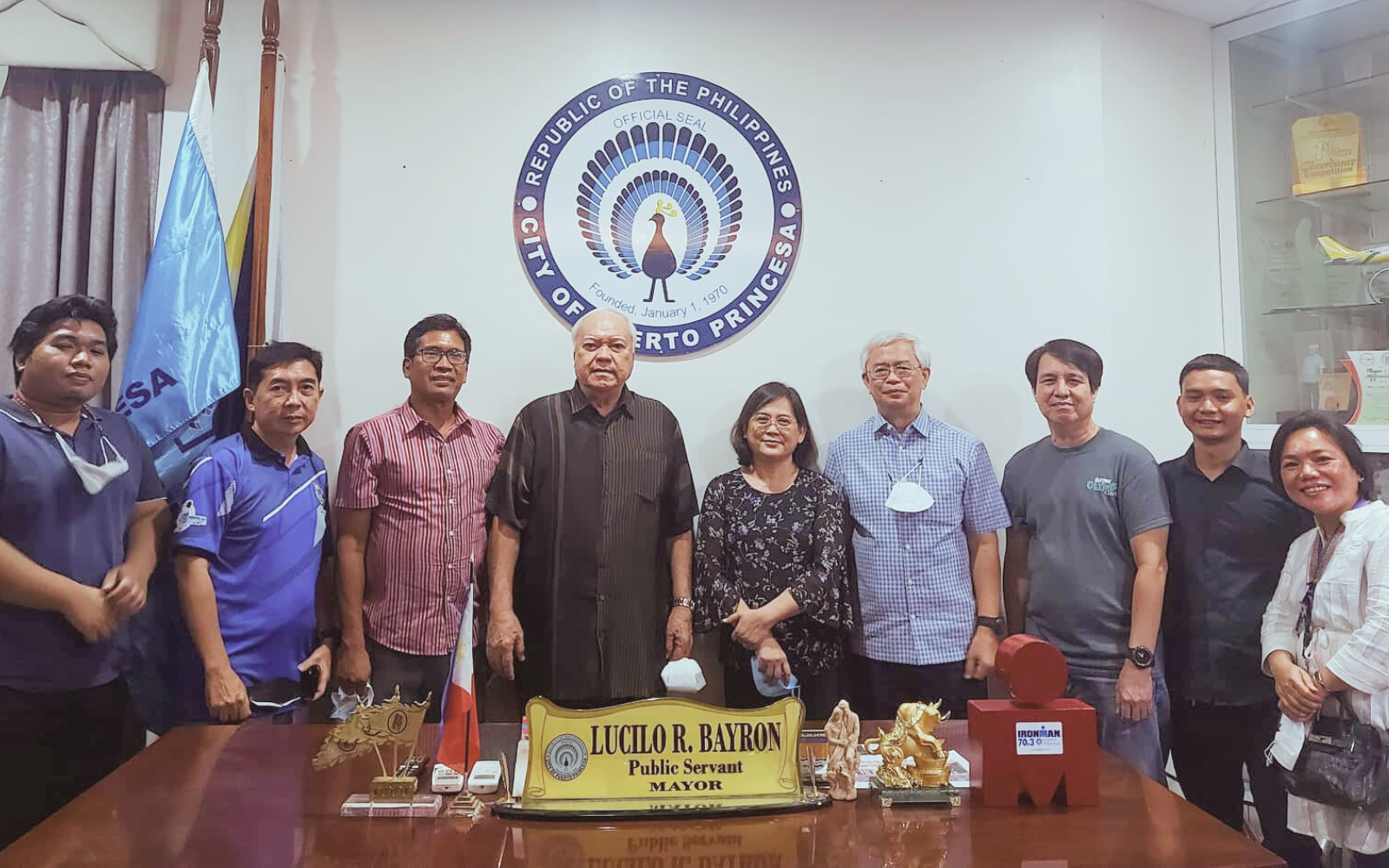
In 2024, Puerto Princesa allocated 17.5 million pesos for adolescent and youth sexual and reproductive health programs. The city also provided 60 million pesos in incentives for Barangay Service Point Officers (BSPOs) who collect health data, ensuring consistent and reliable reporting. Starting next year, BSPOs will receive an increased monthly allowance of 6,000 pesos, making Puerto Princesa the only locality in MIMAROPA to offer such support.
Puerto Princesa is projected to achieve an adolescent birth rate of 34, below the national target of 37. The city’s approach—empowering youth, strengthening healthcare systems, and leveraging technology—has transformed it into a model for adolescent health programs.
Leadership and Collaboration: Cagayan De Oro’s Path to Adolescent Health Sustainability
In 2018, Cagayan de Oro (CDO) faced a serious issue: a high rate of adolescent pregnancies among 15- to 19-year-olds, both residents and transients. The city recorded 80 births per 1,000 adolescents—well above the national target of 37. Even when excluding transients, the rate was still at 47.
To address this, city leaders partnered with the Zuellig Family Foundation (ZFF) and the United States Agency for International Development (USAID) to implement programs aimed at reducing adolescent birth rates (ABR). Their efforts gained momentum with The Challenge Initiative (TCI), a program focused on Adolescent and Youth Sexual and Reproductive Health (AYSRH), introduced in 2021.
Leadership and Collaboration
A City Leadership Team (CLT), made up of local agency heads, was formed to coordinate efforts. When Mayor Rolando “Klarex” Uy took office in 2022, he emphasized teamwork in addressing teen pregnancy. ZFF, through TCI, provided training and mentoring for the CLT, equipping them with leadership skills focused on shared responsibility and collaborative solutions.
Data-Driven Action
CDO’s Information and Service Delivery Network (ISDN), established in 2018, played a key role in gathering and analyzing data. With TCI’s guidance, the network streamlined efforts, making it easier to distinguish ABR among residents and transients. This allowed for more targeted interventions to prevent first and repeat pregnancies and delay sexual activity among the youth.
City Health Officer Dr. Rachel Daba-Dilla stressed the importance of accurate data: “Data is power! We have the highest rate (in Northern Mindanao) simply because we find them. This helps us understand and address the problem.”
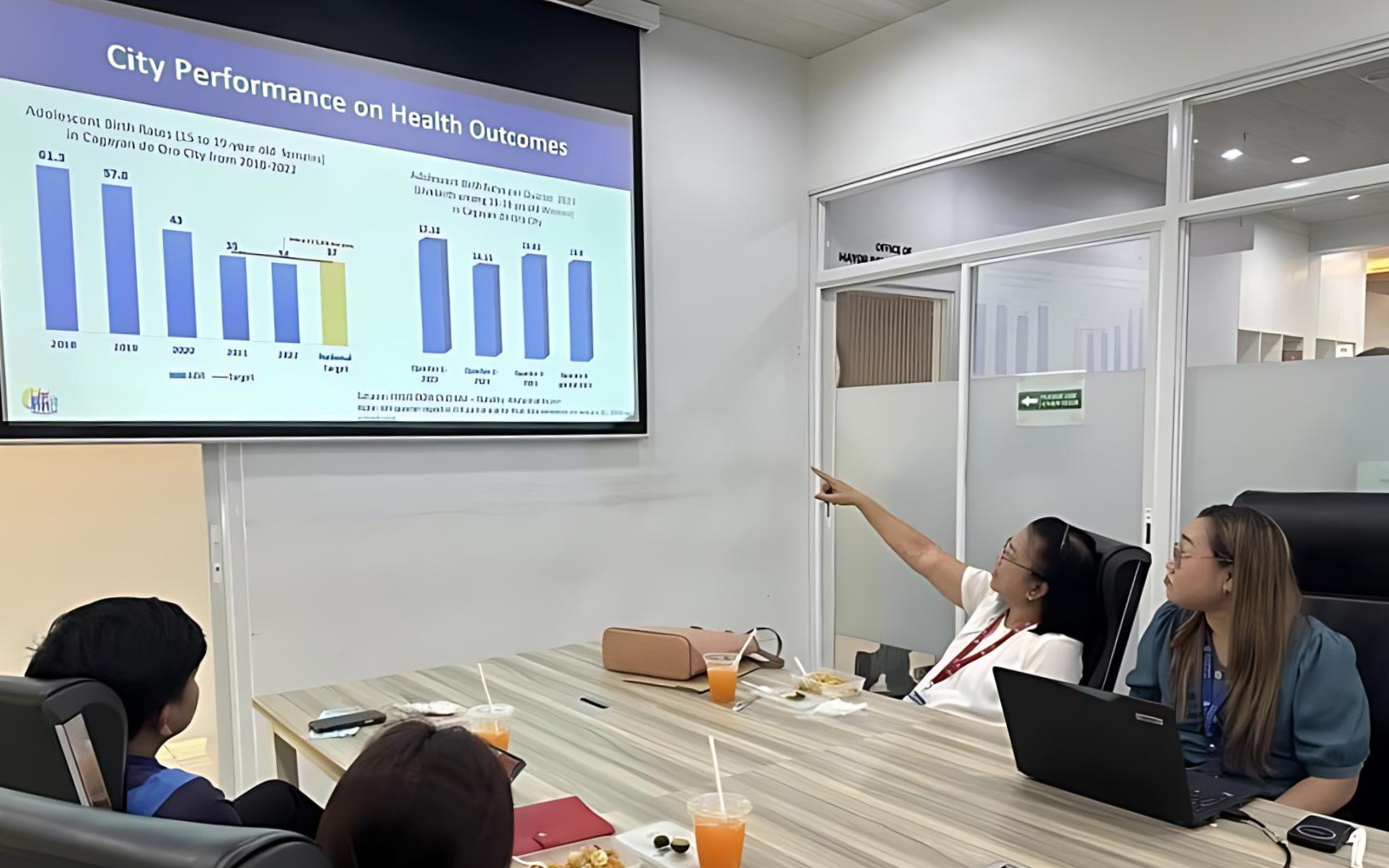
Strengthening Health Services
The ISDN also improved the city’s referral system, integrating services related to adolescent reproductive health, mental health, and substance use. Recognizing the need for accessible health services, the city expanded its adolescent-friendly health facilities (AFHFs) to 65 facilities, offering education, counseling, vaccinations, and antenatal and postnatal care.
Engaging the Youth and Community
Mayor Uy ensured that youth organizations, particularly the Sangguniang Kabataan (SK), were actively involved in governance. Youth leaders became peer educators, helping to promote AYSRH programs. Barangay officials and health workers also received training, strengthening community-based family planning initiatives.
Mayor Uy personally engaged parents in discussions, encouraging them to support AYSRH programs and modern contraceptives. This led to increased awareness and use of free family planning services available in health centers.
Family Planning and Data Quality
Through TCI, the City Health Office enhanced family planning services with better data management and community outreach. The city also improved access to long-acting reversible contraceptives (LARCs), such as implants and IUDs, with support from the Department of Health (DOH) and community health organizations.
Despite progress, challenges remain. Changes in the Family Health Information System (FHSIS) mean that the modern contraceptive prevalence rate (mCPR) is no longer reported. Instead, tracking will focus on current users and demand satisfaction, requiring updated tracking forms and additional funding.
To adapt, CDO is embracing digital health solutions like Wireless Access for Health. This transition aims to improve efficiency and sustainability by ensuring better tracking, financial protection for services through PhilHealth reimbursements, and additional income for local health facilities.
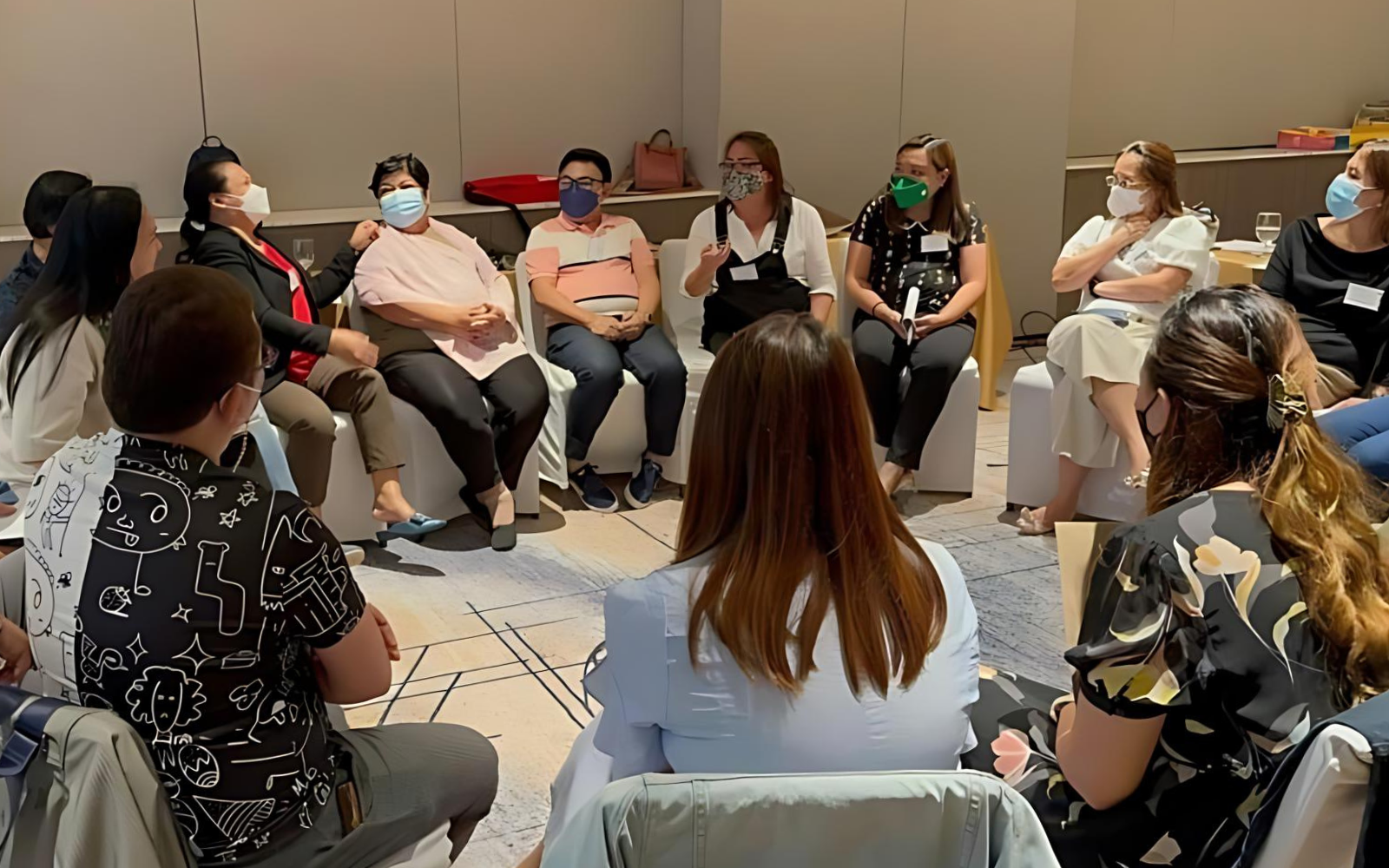
Sustaining Progress
Mayor Uy’s administration has steadily increased budget allocations for AYSRH and family planning, with a 15% rise in 2024. Of the allocated 12.5 million pesos, 88% was used for these efforts.
Even with CDO graduating from the TCI program in 2024, sustainability remains a challenge. However, strong leadership, effective collaborations, and continuous learning ensure that the city remains on track. Commission on Population Development (CPD)-Region 10 Director Neil Aldrin Omega noted, “The key difference between TCI sites and non-TCI sites is the leadership development among local officials. This ensures their commitment to addressing early pregnancy.”
Related articles:
Baguio City: A Beacon of Hope for Young People
Baguio City, a popular destination for tourists and students in the Cordillera region, has made impressive strides in improving the health and well-being of its young people. In 2019, the city’s adolescent birth rate (ABR) stood at 25 per 1,000 live births, lower than the national target of 37, but still a concern. Recognizing the need for change, Mayor Benjamin Magalong took action by joining Zuellig Family Foundation (ZFF)’s The Challenge Initiative (TCI) in 2021, a global program aimed at reducing teenage pregnancies. Thanks to this partnership, Baguio has seen improvements in its Adolescent and Youth Sexual and Reproductive Health (AYSRH) services.
A Focus on Education and Health
Baguio City, home to over 68,000 adolescents, is a highly urbanized city and a key educational center in Northern Luzon. Mayor Magalong is deeply committed to ensuring that young people remain in school and avoid early pregnancies, which can derail their education and future opportunities. “Adolescents are the future of today’s generation. Giving them the best education and concentrating on their welfare will secure the survival of the country,” he emphasized in a speech.
In 2022, the mayor formed a City Leadership Team (CLT) tasked with improving the city’s approach to adolescent health. That same year, Mayor Magalong and other CLT members attended ZFF’s Leadership for Adolescent Youth and Friendly Cities (LAYFC) training, which helped them strengthen their leadership skills and focus on providing the best possible health services to young people.
A Multi-Pronged Approach to Health
As part of its efforts to improve AYSRH services, Baguio City trained health workers through programs like Adolescent Health Education and Practical Training (ADEPT) and Family Planning Competency-based Training (FPCBT). These programs gave healthcare providers the skills they needed to offer better support to adolescents, whether they were seeking reproductive health services or psychosocial support.
A key milestone in Baguio’s progress was the certification of its 16 health facilities and the Baguio City General Hospital and Medical Center (BCGHMC) as adolescent-friendly health facilities (AFHFs). These facilities now meet high standards for offering AYSRH services, ensuring that young people can access the care they need in a supportive and understanding environment.
Bringing Services to the People
Baguio did not stop with improving its health facilities; it also reached out to communities, especially in remote areas. Through mobile outreach programs, the city has conducted 236 activities, serving over 9,600 women, including adolescent parents. This initiative helps bring essential services right to people’s doorsteps, ensuring that no one is left behind.
In 2023, the city council passed an ordinance aimed at preventing adolescent pregnancies and providing social support to young parents. This ordinance includes measures such as integrating Comprehensive Sexuality Education (CSE) into schools and training teachers and health workers to better address adolescent health issues. Additionally, the city has established adolescent health centers and is using social media to promote sexuality education.
Empowering Youth
Baguio City recognizes that peer support plays a vital role in addressing adolescent health. As part of its program, 74 student leaders have been trained as peer educators, enabling them to provide guidance to their fellow students. 130 barangay health workers have also been trained to promote family planning and sexual health services within their communities.
By 2023, the city’s modern contraceptive prevalence rate (mCPR) increased to 30%, up from 27% in 2022, reflecting the positive impact of these efforts.
Teenspired: A Place for Adolescents
Post-pandemic, Baguio City’s hospital-based adolescent health center, Teenspired, reactivated its youth-centered activities. These programs encourage adolescents to visit the hospital’s wellness center, even if they are not sick, to learn about proactive health practices. Over 500 adolescents now regularly visit the center.
Investing in the Future
Baguio City has also significantly increased its budget for family planning and adolescent health programs, investing Php 20.5 million in 2023, up 175% from previous years. This funding has allowed the city to deliver more effective services and reach more young people in need.
A Holistic Approach
Baguio City’s holistic approach to adolescent health—combining sexuality education, peer support, community empowerment, and well-trained healthcare providers—has led to a notable decrease in adolescent pregnancies. The city’s ABR has decreased by 16% since 2019, which is a notable achievement considering the increase in migration to the city.
A Bright Future Ahead
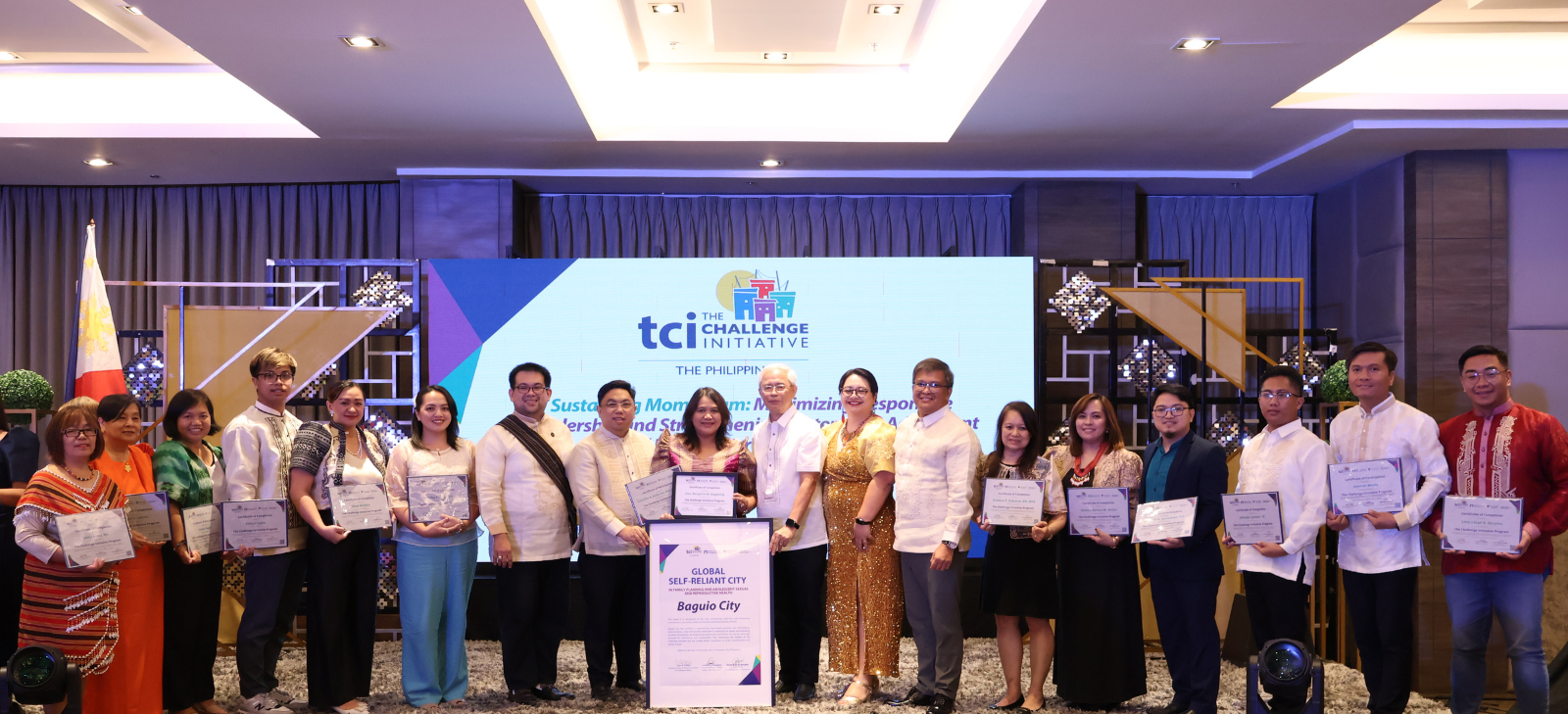
Dr. Flor O. Brillantes, the city’s Health Officer, credits the partnership with TCI for the city’s progress, saying, “The partnership brought an era of change and speedy action to impact our adolescents.” The efforts have not only improved health outcomes but also restored confidence in the healthcare system.
Mayor Magalong’s commitment to adolescent health serves as a model for other cities in the Philippines and beyond. By focusing on the well-being of its young people, Baguio City is building a brighter, healthier future for all.
Related articles:
Turning the Tide: San Jose’s Comprehensive Approach to Adolescent Health
Before working with The Challenge Initiative (TCI), San Jose City in Nueva Ecija had a high rate of adolescent pregnancies. In 2020, the city recorded 43 births per 1,000 girls aged 15 to 19—higher than the national target of 37 per 1,000.
Jaira, a 15-year-old girl with dreams of becoming a flight attendant, got pregnant after a relationship with an older partner. She now lives with her parents and works on a farm to support her child. While she cannot change the past, she hopes for a better future for her and her family.
Mayor Mario “Kokoy” Salvador understood the link between poverty and teenage pregnancy. He wanted to address both by improving education and economic opportunities for young people. “Poverty grows when young people can’t finish school, so I wanted to find ways to reduce poverty,” he said.
San Jose City, located in Luzon, is a major transportation hub. Students from nearby towns like Rizal, Lupao, and Carranglan come to study here, contributing to high adolescent pregnancy rates.
Partnership with TCI
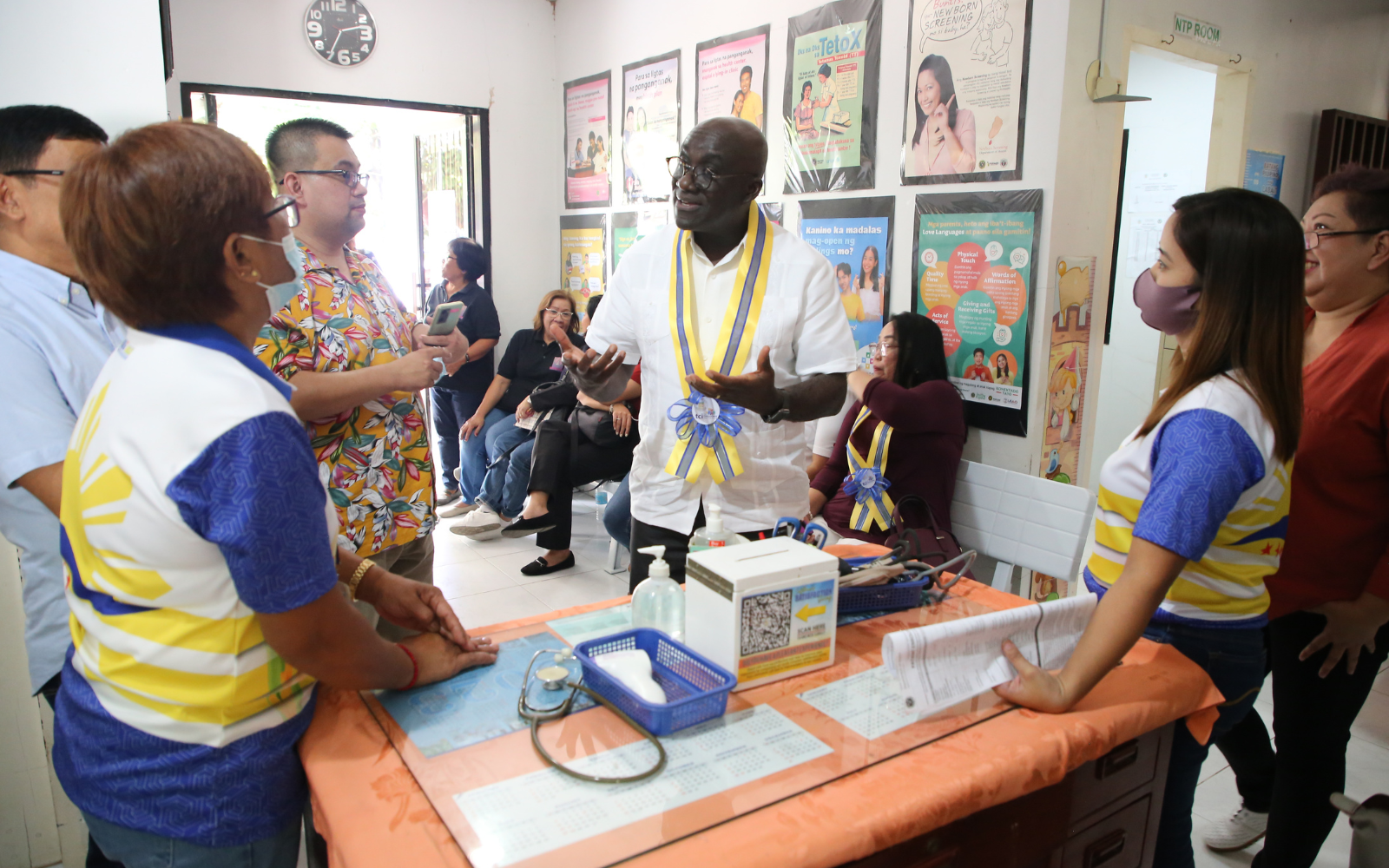
San Jose City in Nueva Ecija has made great progress in improving youth health through its partnership with Zuellig Family Foundation (ZFF), through TCI. City leaders say that TCI’s programs, especially the Leadership for Adolescent and Youth-Friendly Cities (LAYFC) training, have helped strengthen their adolescent and youth sexual and reproductive health (AYSRH) programs.
At first, city and health officials were hesitant to join TCI. It was a new program in the country, and San Jose was one of the first cities to participate. But after learning about TCI’s successful strategies, they saw how it could help address the city’s urgent health issues.
San Jose’s partnership with TCI began in 2021. Mayor Salvador and his City Leadership Team (CLT) took part in LAYFC training, a key requirement set by TCI. This training gave them the knowledge and skills to lead the city’s AYSRH programs.
The CLT, made up of officials from different local government offices, was established through Executive Order 36, series of 2021. Despite delays caused by the COVID-19 pandemic, the team remained dedicated. They updated their plans based on community input, ensuring their efforts directly benefited young people.
Making An Impact
By 2023, San Jose City’s adolescent birth rate (ABR) had dropped to 30 per 1,000, meeting the national target. The City Health Office (CHO) expects it to fall further to 27 per 1,000 by the end of 2024.
San Jose City worked with the Department of Health (DOH), Commission on Population and Development (CPD), public hospitals, and private health facilities to expand family planning (FP) services. Engaging private hospitals and lying-in clinics helped increase the modern contraceptive prevalence rate (mCPR) from 31% in 2022 to 32% in 2023, surpassing the national target.
The city trained healthcare workers and collaborated with private groups, providing them with FP supplies in exchange for monthly reporting. The city also built a strong data reporting system to track progress and adjust strategies as needed.
The Mandanas Ruling allowed San Jose to procure its own FP supplies, strengthening public-private partnerships and expanding access to contraception.
Empowering Healthcare Workers
All ten health facilities in San Jose City are now certified as adolescent-friendly health facilities (AFHFs). The city also launched the first Teen Information Center in the region, a hub where young people can access reproductive health information and support.
Training healthcare workers was a key strategy. In 2023, 37 workers completed programs like Adolescent Development Enhancement and Practical Training (ADEPT) and Family Planning Competency-based Training (FPCBT). They also received training in handling sensitive adolescent health issues. These efforts ensure that teens and young adults receive the best care possible.
Strengthened Policies and Budget Commitment
The local government passed five resolutions, two executive orders, and one city ordinance to sustain these efforts. One resolution authorized the mayor to sign an agreement with TCI. Ordinance 20-032 supports young mothers and helps prevent repeat pregnancies among teenagers.
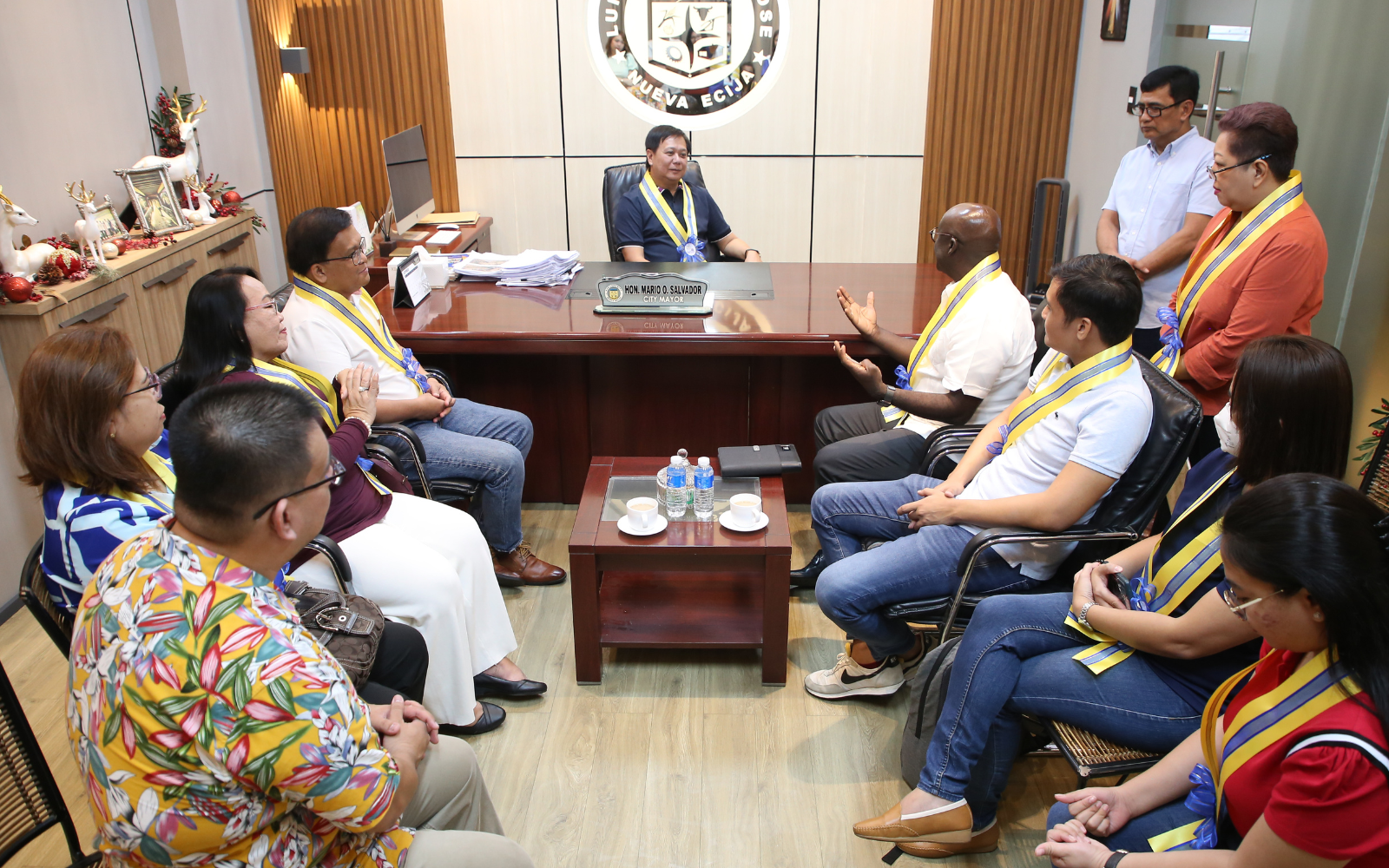
The city also significantly increased funding for adolescent health. In 2023, it allocated PhP 1.6 million. By 2024, the budget had risen nearly 200% to PHP 4.6 million, with 92% of it already spent on training, service expansion, and making health facilities more youth-friendly.
Building a Future for Young People
San Jose City continues to expand its programs, ensuring young people have access to the information and care they need. The City Population Office and the Department of Education (DepEd) have partnered to implement Comprehensive Sexuality Education (CSE) in schools. The CHO is also working with private birthing centers and clinics to improve FP services.
The city has launched several initiatives to promote responsible parenting and family planning:
- Kalalakihang Tapat sa Responsibilidad at Obligasyon sa Pamilya (KATROPA): Encourages male involvement in family planning.
- Batang Ina at Batang Ama (BIBA): Supports teenage parents in raising their children.
- Information and Service Delivery Network (ISDN): Dispels myths and misinformation about contraception.
San Jose’s experience provides valuable lessons for other cities, especially those with growing migrant populations that may face similar challenges.
A New Dawn for San Jose’s Youth
“I am thankful to the RHU for always checking in on me and my family. When I miss a check-up, they send a barangay health worker to remind me, bring vitamins, and share information so I can prevent another unplanned pregnancy,” Jaira said.
Her involvement in the Usapang BIBA program has inspired her to help others avoid the same mistakes. “I want young people like me to know that we can turn our lives around after a mistake.”
Jaira’s journey shows the power of support and guidance. San Jose City’s work with TCI is a model for communities addressing similar issues. By prioritizing youth health, cities can create a better future for the next generation.
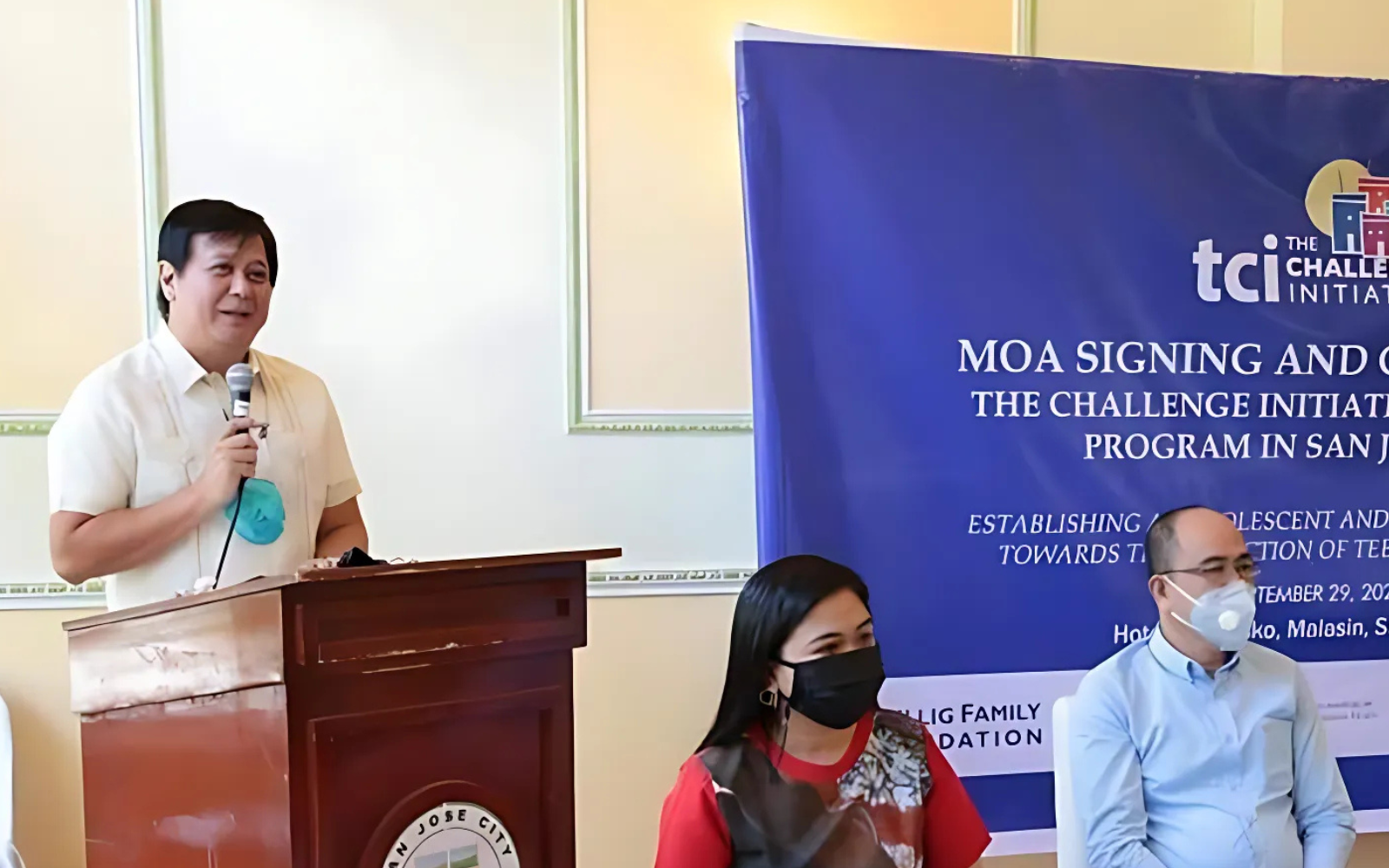
As Mayor Salvador put it, “We are proud of what we’ve achieved, but there’s still more to do. With the help of TCI, our community, and our partners, we’re confident that we can build a better future for the youth of San Jose City.”
Related articles:
Sustainable Solutions: Dipolog City’s Comprehensive Fight Against Adolescent Pregnancy
Effective leadership that prioritizes doing the right thing leads to positive outcomes. Dipolog City Mayor Darel Dexter T. Uy has taken a proactive approach to addressing teenage pregnancies, making the city a leader in tackling this issue. Even before it became a national priority in 2021, Mayor Uy had already started implementing strategic measures.
In 2018, Dipolog City’’s adolescent birth rate (ABR) was 73.8 per 1,000 live births, meaning 548 adolescents gave birth. It declined to 55.6 in 2019 (420 births), but this was still higher than the national target of 37.
A Unified Stand Against Teenage Pregnancies
Dipolog City joined The Challenge Initiative (TCI) in 2020, a partnership between the Zuellig Family Foundation (ZFF) and the William Gates Sr. Institute for Population and Reproductive Health. This gave the city clearer directions in addressing adolescent and youth sexual and reproductive health (AYSRH) issues.
Mayor Uy, who had undergone a ZFF leadership program, created the City Leadership Team called Team BABII – Batang Ama, Batang Ina Initiative (Team of Young Dads and Moms Initiative). “I called on team members to create a unified, comprehensive youth program that adopted a whole-of-government, whole-of-society, and whole-of-systems approach,” he said. This approach gained support from city departments, national agencies, and NGOs.
One major result was the Department of Education’s involvement in youth summits for Grades 8 and 9 students to raise awareness about sexuality and reproductive health. The city also organized dialogues between teens and parents, along with interactive sessions on adolescent sexual and reproductive health.
Data-Driven Programs
With TCI’s guidance, the city started collecting disaggregated data to create targeted programs. Initially, health data only covered women aged 0 to 49, but Mayor Uy pushed for data collection specific to ages 10 to 14 and 15 to 19 years old. This revealed the true scope of the problem.
As a result, Dipolog City’s ABR dropped from 50 births per 1,000 in 2020 to 31 in 2023 and is projected to reach 25 by the end of 2024. “We now regularly collect, monitor, and analyze age-specific data to guide planning and programming,” Mayor Uy said. Monthly audits ensure data accuracy.
Empowered Health Workers
The Leadership for Adolescent and Youth-Friendly Cities (LAYFC) program, developed by ZFF under TCI, trained city health and education leaders to identify root problems and work on solutions. The city also partnered with the Department of Health and the Commission on Population and Development for technical training.
Under the Family Planning Competency-Based Training (FPCBT), healthcare professionals like doctors, nurses, and midwives were trained in modern family planning methods. This contributed to an increase in modern contraceptive use (mCPR) from 47% in 2019 to 55% in 2023.
The LAYFC also extended to youth and barangay (village) leaders. Many barangay health workers (BHWs) became more involved in addressing AYSRH issues. Mesla Saladdani, a BHW, shared, “If TCI existed when I was younger, I wouldn’t have been a teen mom.” Today, BHWs are more engaged in supporting young parents, and there are also livelihood programs and scholarships to help keep them in school.
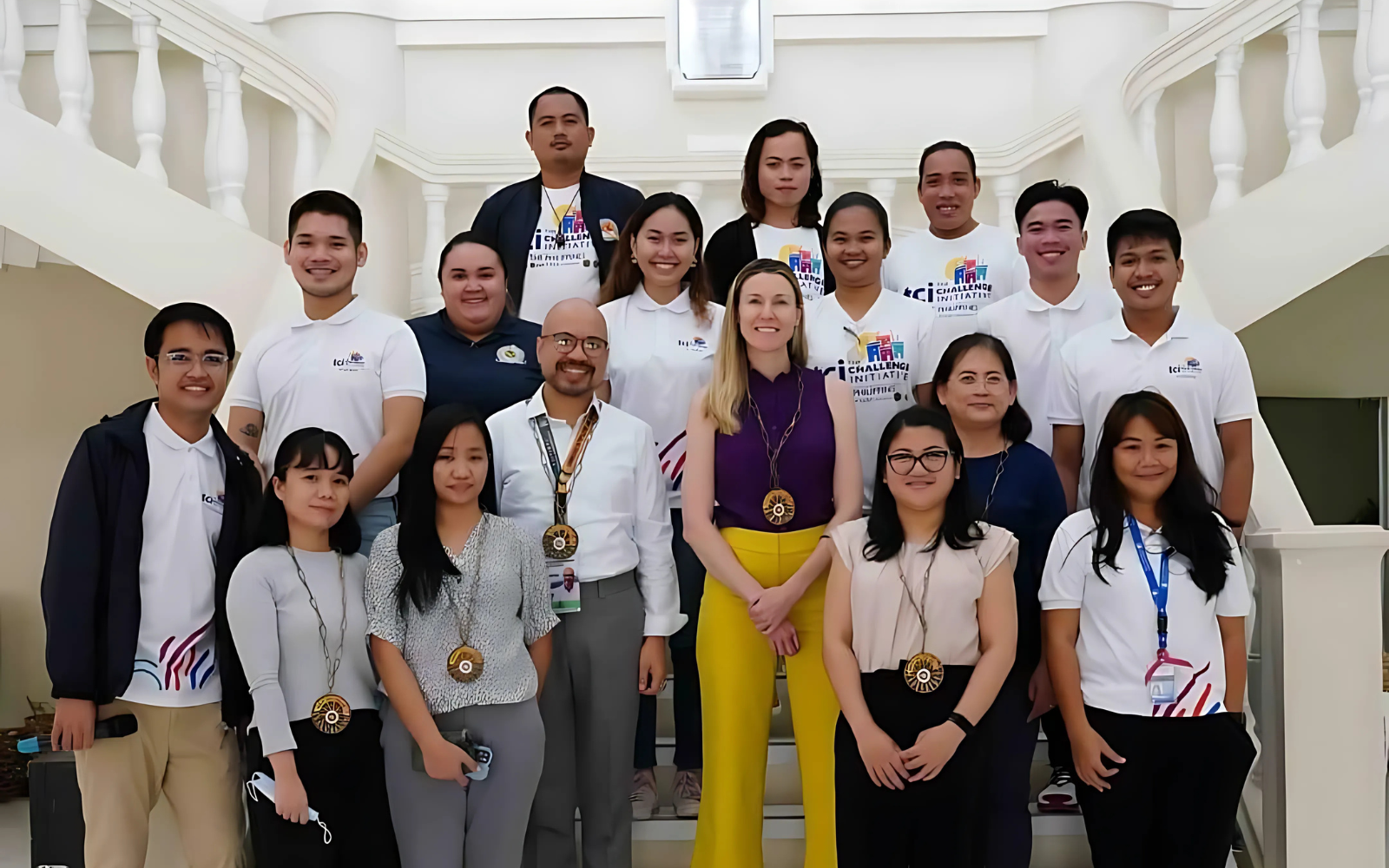
Expanding Access to Adolescent Healthcare
The city also invested in adolescent-friendly health facilities (AFHFs). By 2024, all 28 health centers in Dipolog City were accredited as AHFHs, offering youth-focused services like counseling, immunization, and health education. These facilities have drawn young people from both Dipolog City and nearby towns.
Legal and Financial Support
Dipolog City’s commitment to youth welfare strengthened further with the enactment of the Child and Youth Welfare Code in 2022, which outlines the rights of children and the responsibilities of parents and local government. Additionally, the city has consistently increased its annual budget for AYSRH and family planning programs.
Ensuring Long-Term Impact
There is confidence that AYSRH efforts will continue in Dipolog City even after TCI programs conclude. Mayor Uy and his team have institutionalized programs to ensure sustainability beyond his term. By engaging and training youth, community leaders, and agency heads, they have built a network of advocates committed to adolescent health and well-being.
Dipolog City’s success in addressing teenage pregnancies serves as a model for other communities. By using data-driven strategies, investing in youth empowerment, and fostering partnerships, the city has shown that meaningful change is possible. Moving forward, the goal remains clear: to create a future where young people can thrive and reach their full potential.
Mayor Oric Furigay of Lamitan City, Basilan: Conquering obstacles to achieve nutrition goals
“To be a leader is not always to be in power. I believe leadership is about responsibility, if you are a leader you should always take care of your constituents.” – Mayor Roderick “Oric” Furigay, Lamitan City, Basilan
Despite personal hardships, including the loss of his wife, Mayor Oric continued to serve his community and address health and nutrition challenges. He and his late wife, Rose, are credited with shaping Lamitan City’s development, having laid its foundation during their time in leadership.
Mayor Oric’s political career spans several decades, beginning in 1992 when he was elected to the Sangguniang Bayan. His dedication to public service led him to become the mayor in 2004, and he served three terms before passing the torch to his wife. After her passing, he resumed leadership, and through his efforts, Lamitan overcame challenges to secure cityhood in 2011, a legacy he continues to uphold.
As part of his ongoing commitment to Lamitan’s growth, Mayor Oric joined the Zuellig Family Foundation (ZFF)’s Provincial Nutrition Governance Program in February 2022, recognizing the importance of improving the city’s health and nutrition. Under his leadership, Lamitan’s population of over 100,000 people benefits from his dedication to sustainable development and community well-being.
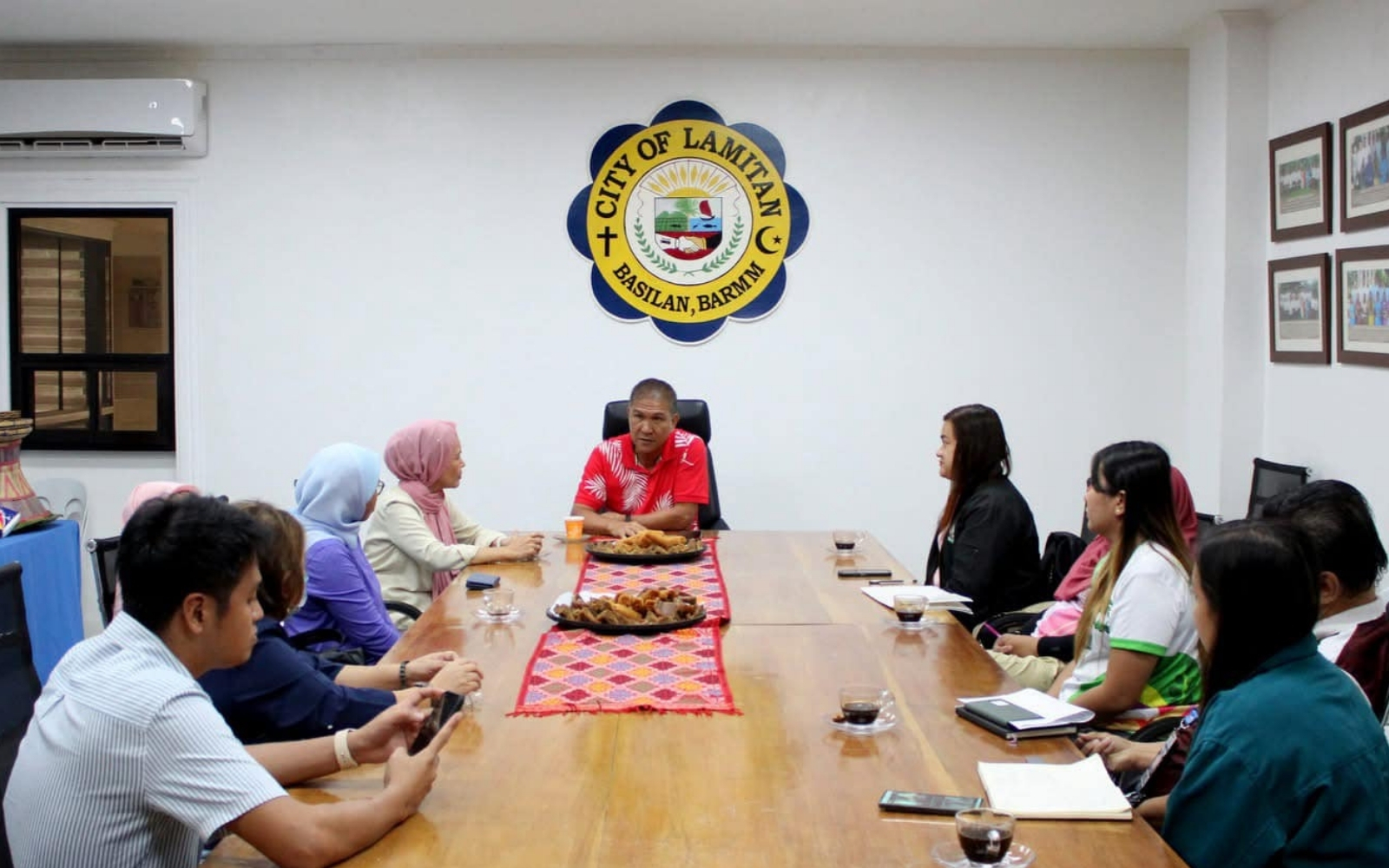
Collaboration with ZFF
Lamitan City’s partnership with ZFF actually began with Mayor Rose, who joined the Foundation’s Health Leaders for the Health Leaders for the Poor-Municipal Leadership and Governance Program (HLP-MLGP). During her time in the program, she improved healthcare access by hiring more medical staff, increasing PhilHealth accreditations, and recruiting additional Barangay Health Workers. These efforts resulted in better health outcomes, including an increase in facility-based deliveries.
In 2021, Mayor Oric continued this work by participating in ZFF’s PNGP. He took over the program in the final year of his late wife’s term, ensuring Lamitan City’s commitment to improving its nutrition governance despite the leadership transition. The city’s nutrition system was initially lacking key components, including a dedicated nutrition committee and action plan.
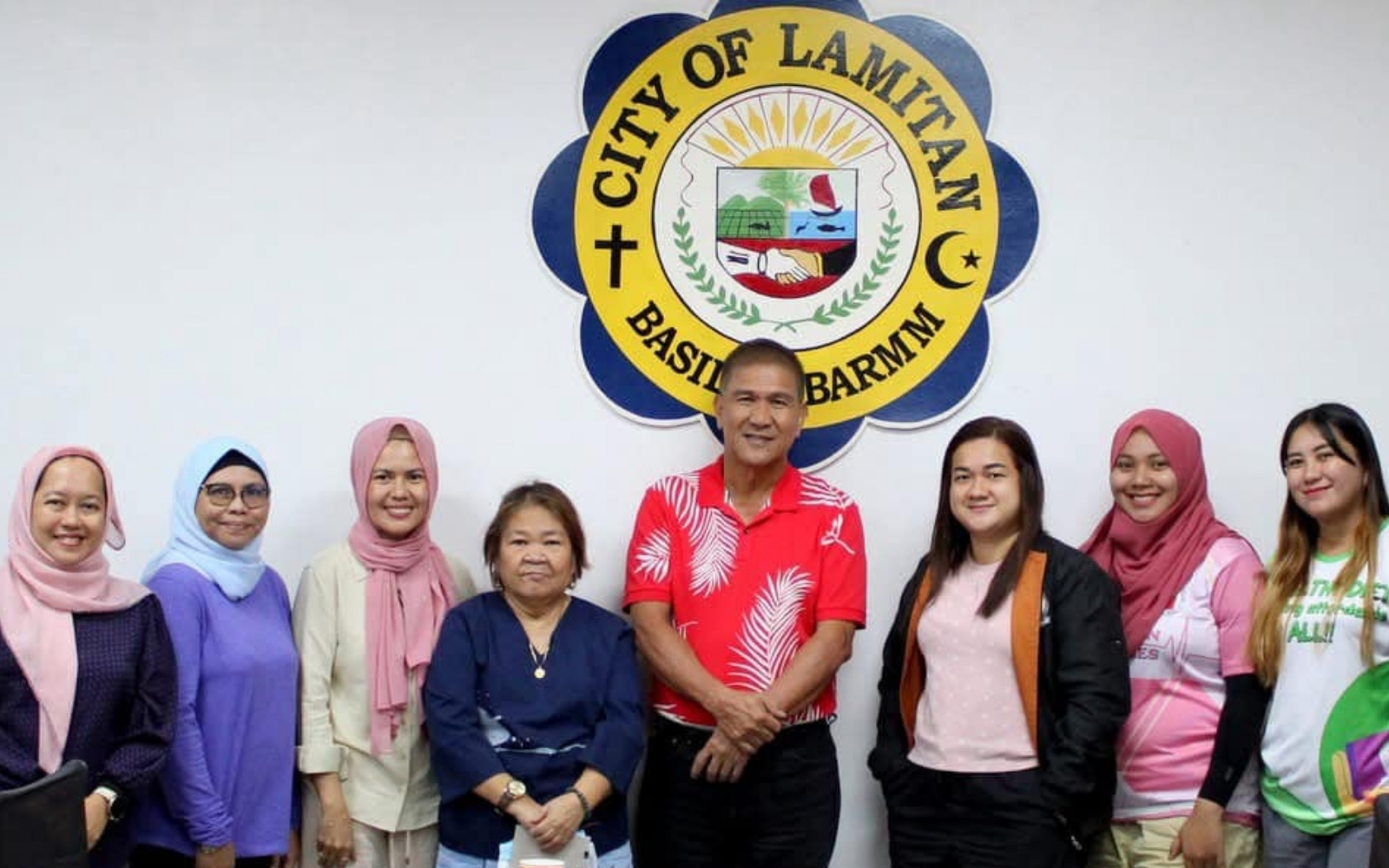
Taking action on nutrition
After initial discussions with ZFF, Lamitan City hired its first full-time City Nutrition Action Officer (CNAO).
Through the MNGP, Lamitan identified critical issues contributing to malnutrition, such as poor sector collaboration and misconceptions about stunting being hereditary. This led to a citywide effort to improve nutrition, with goals to secure sustainable funding and ultimately, reduce stunting and malnutrition.
The following are significant milestones achieved by Lamitan City under Mayor Oric’s leadership:
- City Nutrition Action Plan (CNAP): Developed in 2022 and approved by the Lamitan Sangguniang Panlungsod in 2023, the CNAP outlined nutrition interventions with a boosted budget of 5 million pesos for 2023.
- City Nutrition Committee (CNC): Regular meetings were held, allowing them to discuss relevant issues related to nutrition, leading to the passing of ordinances in support of nutrition. These included ordinances on the Use of Iodized Salt, the Establishment of a System for Maternal, Neonatal, and Child Health Nutrition (MNCHN) Strategy, and the Prohibition of Junk Foods.
- Barangay Engagement: By the end of 2022, Barangay Nutrition Committees (BNCs) were formed in 41 out of 45 barangays to address malnutrition.
- Mayor’s Deep Dive: In December 2022, Mayor Oric visited Barangay Balas, witnessing firsthand the struggles of malnourished families, which drove him to integrate nutrition education into the ROSE Caravan, an outreach initiative targeting far-flung barangays. By including nutrition awareness in the program, the city ensured broader access to vital information about proper nutrition.
- Phase 2 of Barangay Engagement: In 2023, an executive session with barangay captains resulted in concrete actions to support the Mayor’s nutrition program, including high coverage of infant and young child feeding practices.
- Operation Timbang (OPT): In 2023 Lamitan achieved a 93.3% OPT coverage, the highest in Basilan, thanks to strong barangay support and efficient tracking by the OPT Task Force.
Throughout the 15-month program, Mayor Oric’s leadership focused on improving Lamitan’s nutrition system. These efforts led to a significant reduction in stunting from 21.7% in 2022 to 9.1% in 2023, and a decrease in wasting from 5.22% to 2.35%, marking substantial progress in addressing Lamitan’s nutrition challenges.
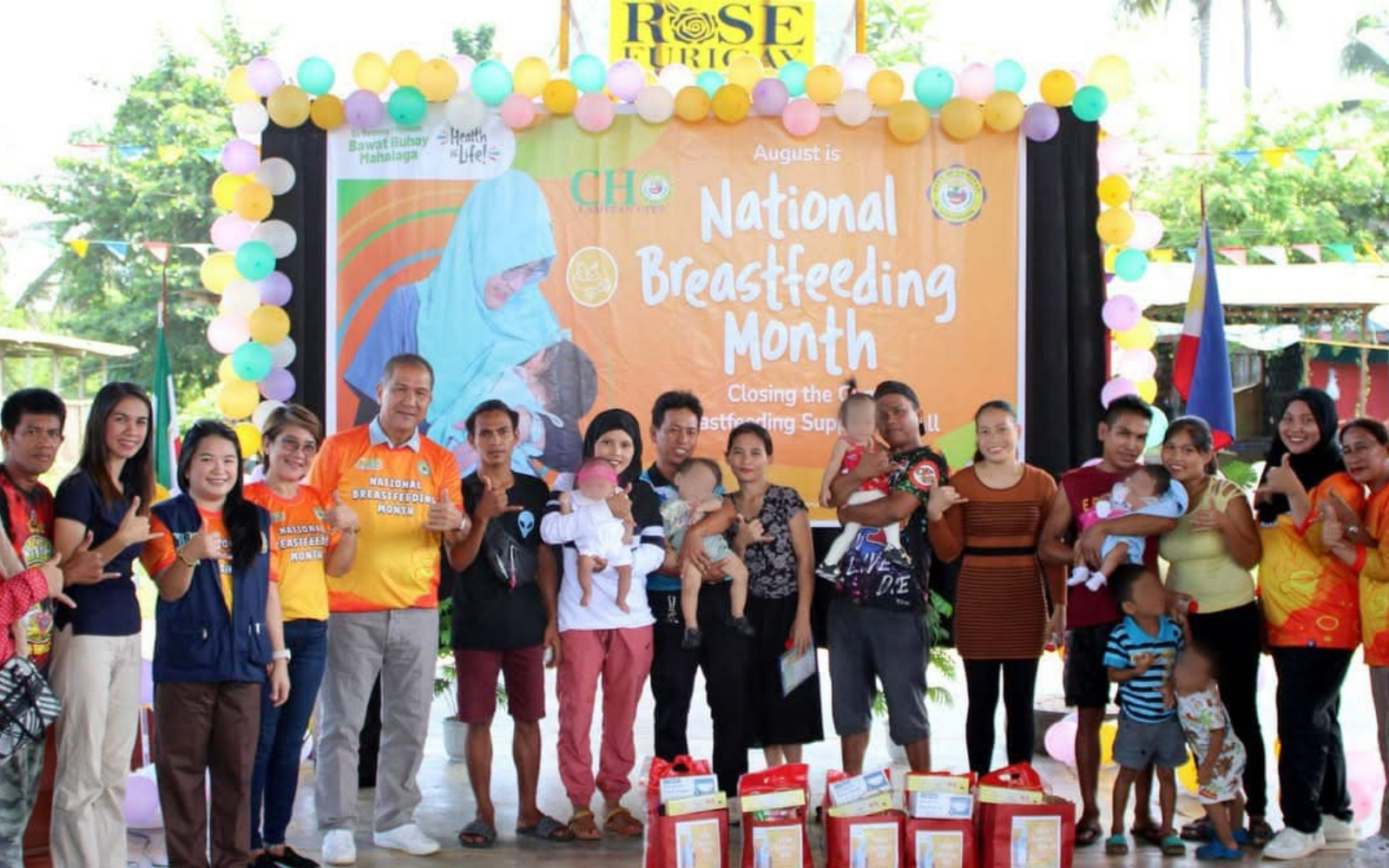
Rising above the ashes
Despite these successes, Lamitan faces ongoing challenges, including the need for more functional BNCs and behavioral change interventions for its diverse population. A decrease in OPT coverage to 84.3% and an increase in stunting rates to 15.4% in 2024 underscore the need for sustained effort.
To address these challenges, Mayor Oric plans to relaunch the ROSE Caravan as ROSE Caravan 2.0, expanding its focus to include broader nutrition interventions. The Barangay Leadership for Food and Nutrition Security (BLFNS) will target 10 priority barangays having highest malnutrition rates with tailored programs.
In 2024, Lamitan was selected as a pilot site for ZFF’s Pook Malusog Health and Nutrition Information System (HNIS) Dashboard, alongside Tipo-Tipo. Mayor Oric provided tablets for barangay use and assigned an IT specialist to oversee the system. For 2025, the city plans to hire a dedicated IT professional to manage the HNIS database and ensure smooth implementation. The upcoming 2025 OPT will serve as a test phase for the system in pilot barangays.

Mayor Oric remains steadfast in his commitment to Lamitan’s growth. “We should once again work together to sustain our gains,” he said. “We will continue to provide a government of competence, integrity, and performance.”
Rising to the Challenge: Laurence Navarro’s Leadership Journey
For Laurence Navarro, entering the healthcare field was not a career decision but a personal connection to her family. Navarro, whose sister is a doctor, was inspired to follow a similar path by completing a Nursing degree.
Faced with high maternal and infant mortality rates, limited healthcare staff, and the challenges of reaching remote areas, Laurence found her passion in public health. These obstacles strengthened her resolve to make a difference in the lives of others.
Laurence tackled the shortage of healthcare workers by advocating for better staffing and implementing training programs. Securing funding for health infrastructure improvements required building strong relationships with government officials and stakeholders. Despite these challenges, she found motivation in seeing the commitment of health workers and the unity of local leaders working toward better health services.
In 2016, Laurence became Nurse V and joined the Department of Health (DOH)-Ilocos, where she helped implement Zuellig Family Foundation (ZFF)’s Health Leadership and Governance Program. Her efforts led to four provinces completing the program, uniting local leaders to prioritize health in their communities.
For Navarro, seeing mayors and municipal health workers acknowledge the importance of health in their communities during these programs was truly rewarding. These initiatives helped create a united group of health leaders to drive positive change in the Ilocos region.
Leading Universal Health Care (UHC)
Implementing the Universal Healthcare (UHC) Law in 2019 was met with joy by those working in the public health sector. It marked a moment for Navarro and her colleagues in the region. UHC’s main objective is to provide health coverage to all Filipinos by addressing fragmentation in the local health systems, improving services and reducing out-of-pocket expenses—aspirations that align well with Navarro’s personal vision for her community.
When she assumed the position of UHC Coordinator for the Ilocos Region in 2021, she initially experienced uncertainty and questioned her abilities. Could she handle the transition? As it turned out, she proved herself capable and her commitment to serving others remained steadfast.
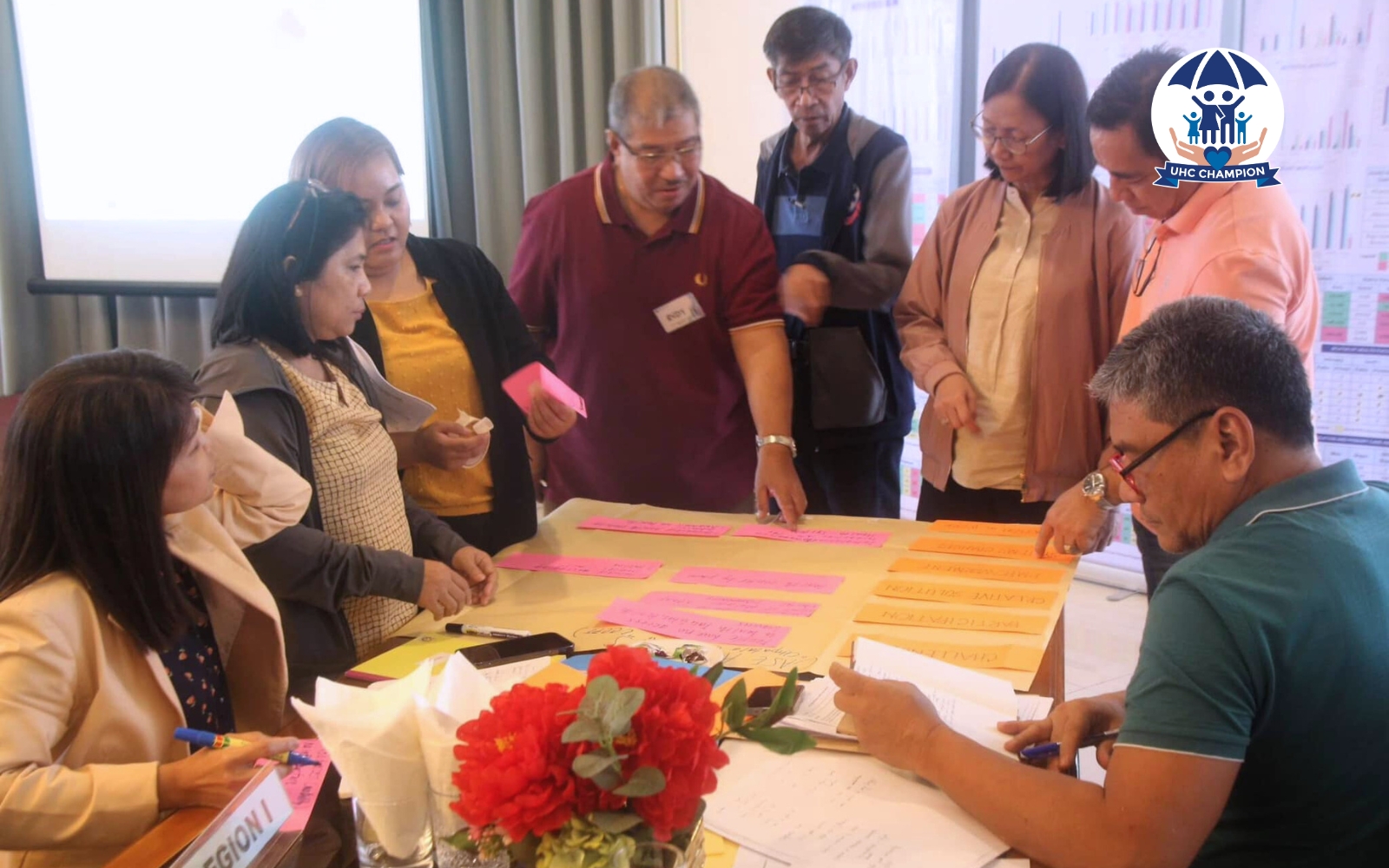
To help accelerate UHC implementation, DOH-Ilocos partnered again with ZFF, its long-time partner in public health leadership and governance through the Bayang Malusog program. The program provided leadership training, technical inputs, and coaching and mentoring sessions for regional and provincial leaders to improve UHC implementation.
As the region’s UHC Coordinator, Navarro played a role in ensuring her region’s participation in UHC initiatives, which meant leading dialogues that initiated reforms that help enhance the skills of healthcare professionals, establish integrated financing methods, and improve healthcare services.
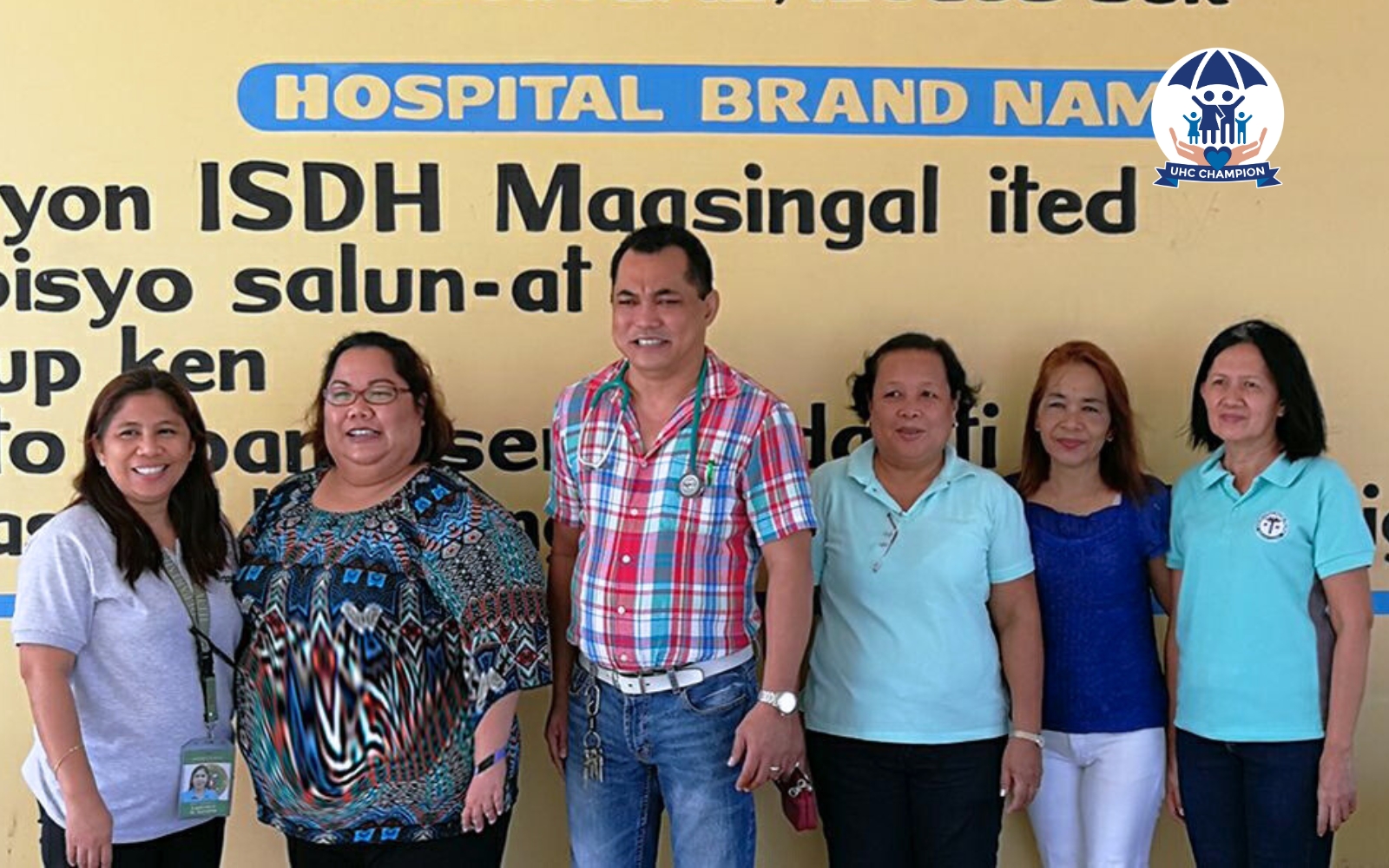
Now in its final year of implementing the Bayang Malusog Leadership Development Program, DOH-Ilocos through Navarro, has proudly taken charge of coaching and providing technical assistance to the different provinces on UHC. To date, together with the regional UHC team, she has led the monitoring and mentoring of provinces on UHC’s Local Health Systems Maturity Level (LHS-ML), a set of metrics for the different provinces in tracking the requisites of a province-wide health system that is aligned to what is necessary for the UHC to be fully delivered to the people.
“The program led the leaders to understand more about health, making them more attuned to the needs of the community. They realized that providing more than just infrastructure is crucial for their constituents’ well-being,” reflected Navarro.
Inspired by this progress, Ilocos continues collaborating with local government units working on expanding health initiatives, introducing strategies to tackle emerging health issues, and continuing to enhance the skills of local healthcare leaders and workers.
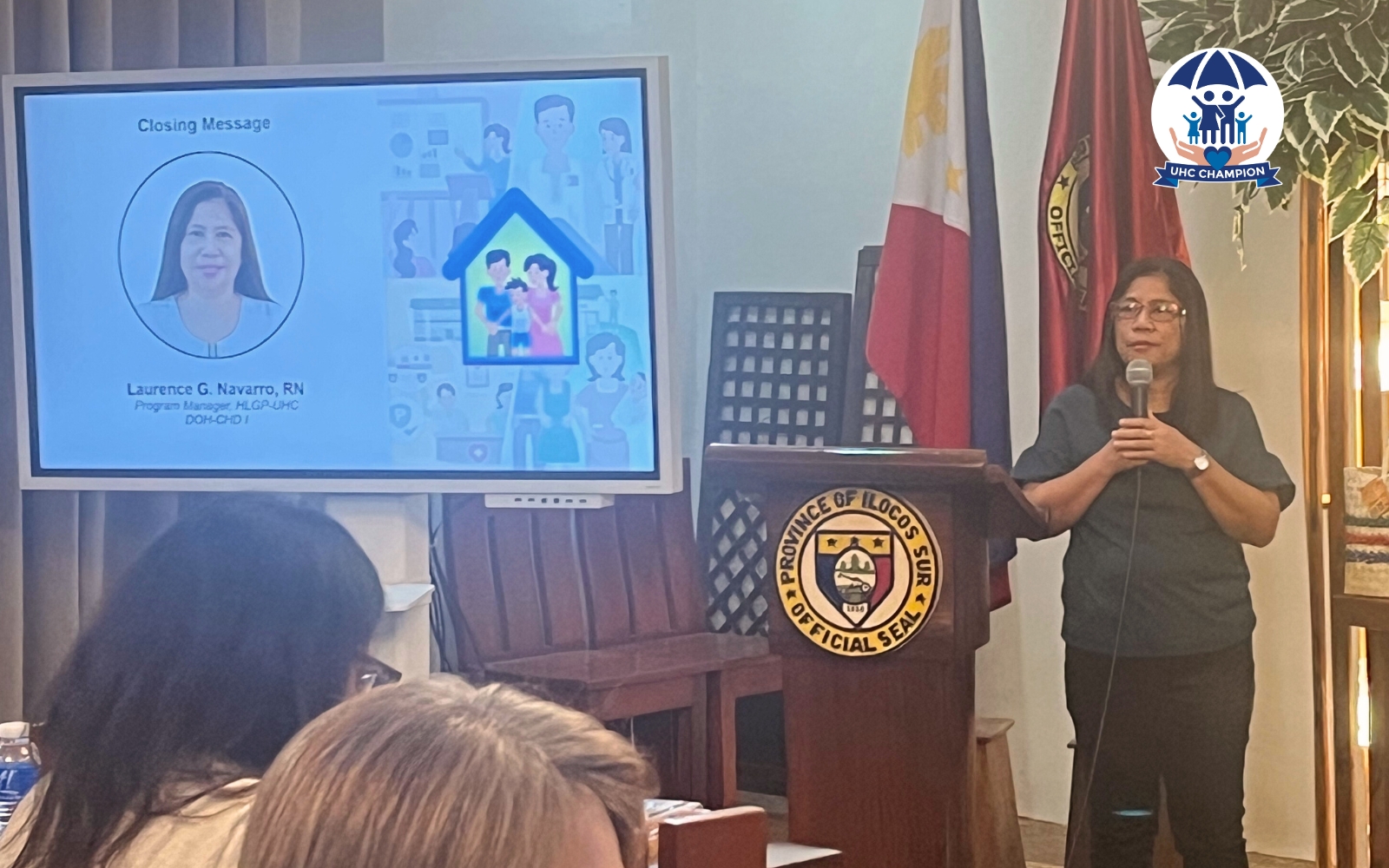
Inspiring Change
Laurence Navarro’s leadership journey shows the power of collaboration and resilience in public health. Her story is a testament to how governance, community engagement, and advocacy can bring universal healthcare closer to reality.
With compassion and strategic vision, Laurence continues to inspire positive change for her region, ensuring a healthier future for all.
Agusan del Sur Moves Forward with Universal Health Care
On November 29, 2024, the Zuellig Family Foundation (ZFF) held the close-out ceremony for the fourth cycle of the Provincial Leadership and Governance Program (PLGP) in Agusan del Sur. The event, attended by Governor Santiago Cane Jr., Provincial Health Officer Dr. Jacqueline Momville, the Department of Health (DOH)-Caraga, and academic partner Davao Medical School Foundation (DMSF), highlighted the province’s achievements in implementing Universal Health Care (UHC) since 2022.
Key programs and metrics under UHC, such as the Local Health System Maturity Level (LHS-ML), Municipal Leadership Development Program (MLDP), and Konsulta Registration and First Patient Encounter (FPE), were reviewed during the event.
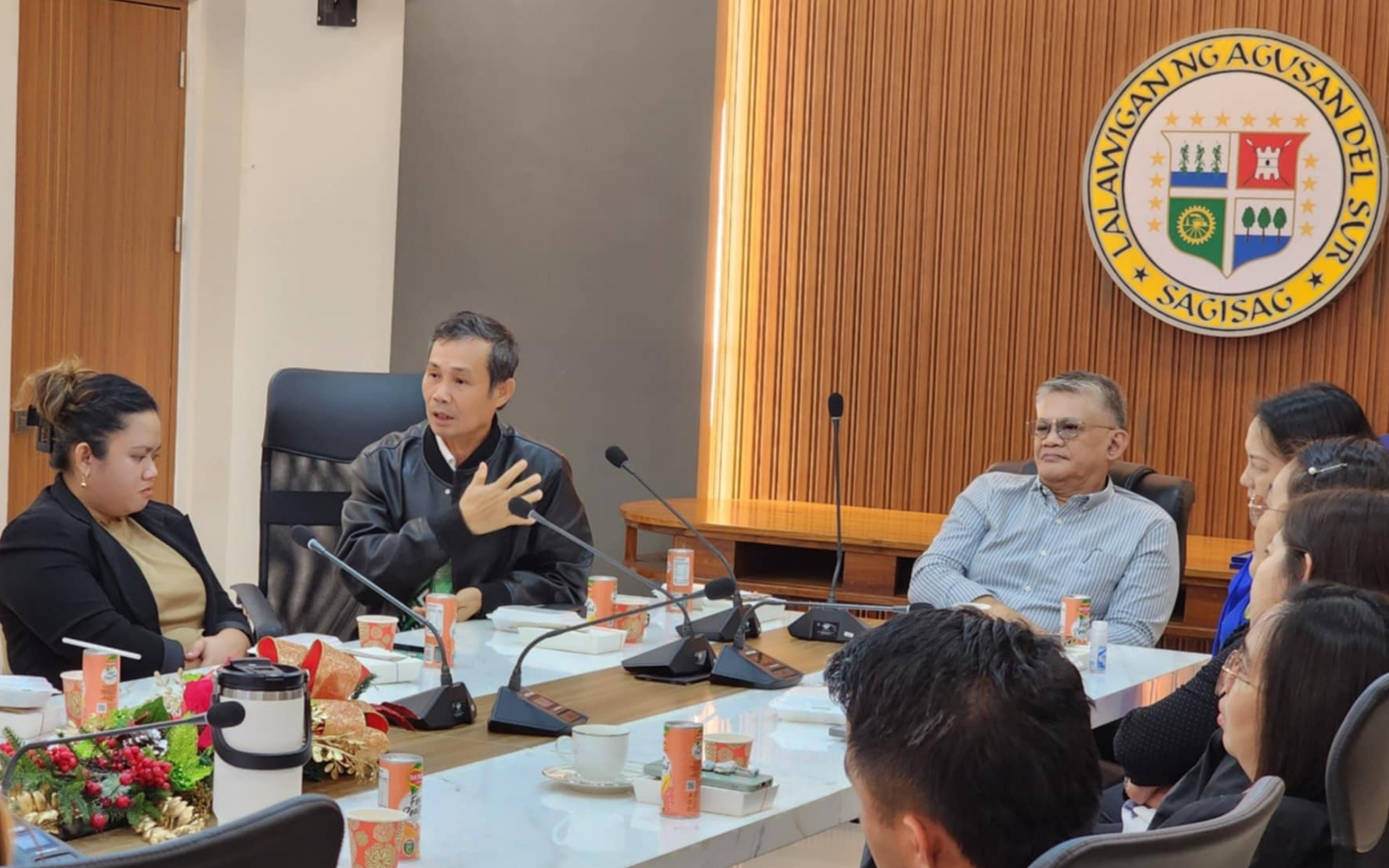
Progress in UHC Implementation
Governor Cane celebrated the strides Agusan del Sur has made in strengthening its health systems. He shared, “We have worked tirelessly to improve our health systems, ensuring that every Agusanon has access to affordable and quality healthcare services.”
UHC LHS-ML has been a key measure of the province’s progress, guiding efforts to strengthen health services.
MLDP, a collaboration between the provincial government and municipal leaders, and supported by DMSF, played a key role in training mayors and Municipal Health Officers (MHOs) to enhance health governance. This training focused on leadership, resource management, and health system improvements, paving the way for more responsive healthcare in the province.
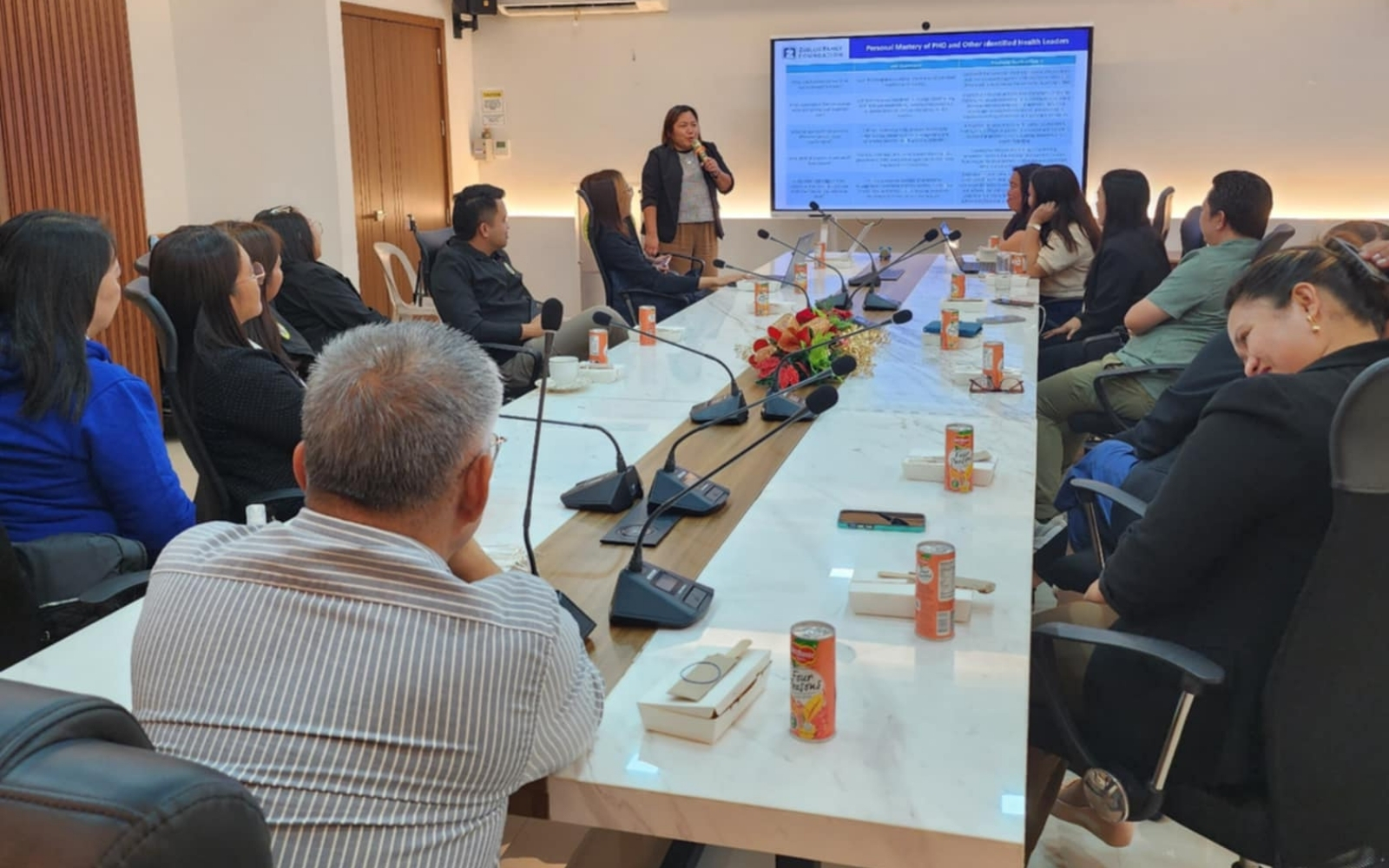
Konsulta Program Advances
The Konsulta program, which provides primary care services, was also highlighted. Thousands of families in Agusan del Sur are now registered, ensuring better access to preventive care. However, there is a need to speed up the program’s rollout to provide full financial protection for all residents.
Lessons and Next Steps
The close-out event served as a platform for reflection and planning. Dr. Jacqueline Momville stressed the importance of collaboration between the provincial government, DOH, and local leaders to sustain and expand progress. She noted, “The success of UHC is not just about implementation; it’s about creating a culture of health governance that empowers our local leaders and benefits every citizen.”
DOH-Caraga was commended for its technical assistance and guidance, which helped address challenges and achieve health milestones. Governor Cane urged the Provincial Health Office team to make full use of the 25% IRA allocation for health to strengthen UHC initiatives further.
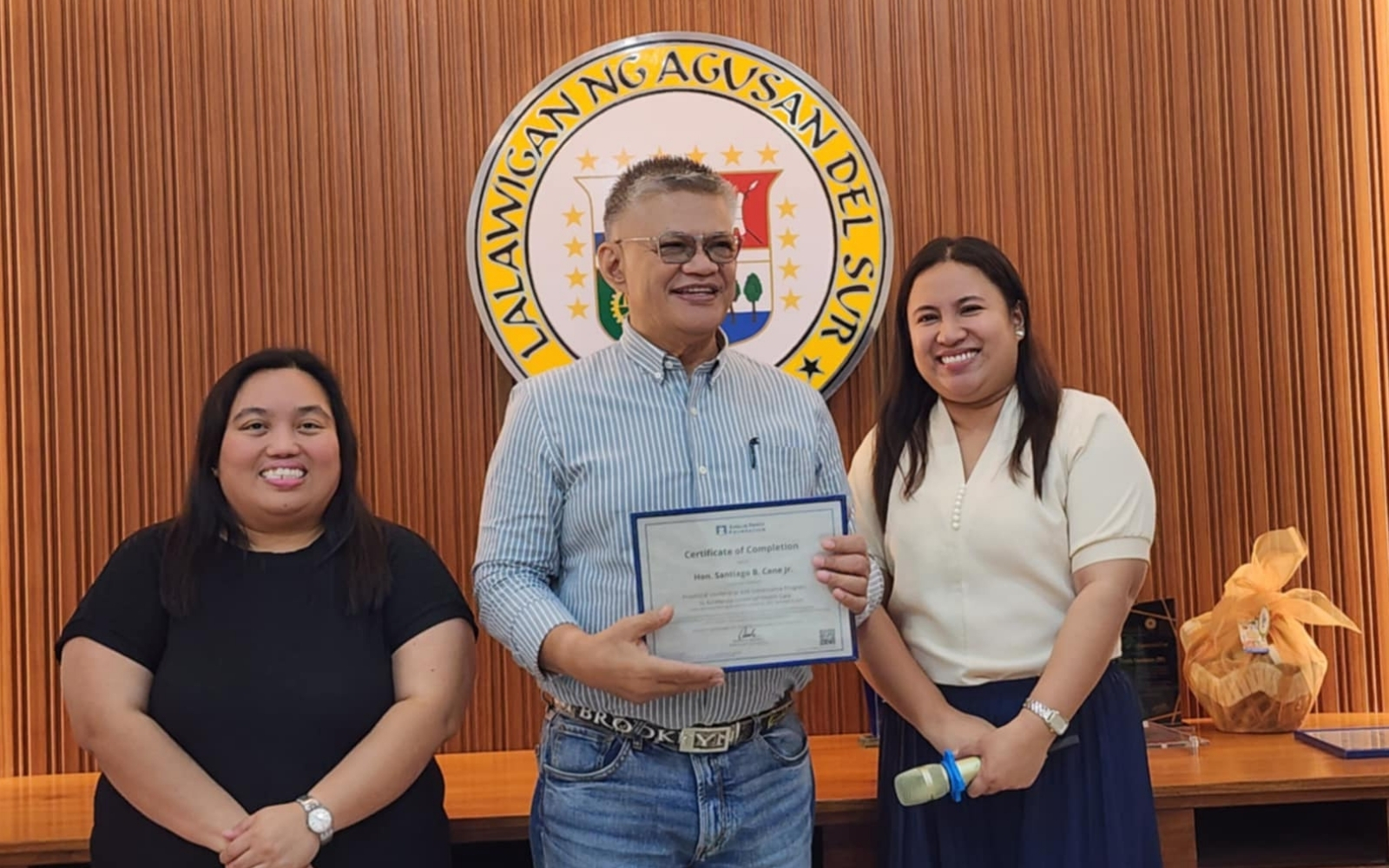
Looking Ahead
While much has been achieved, more work is needed to realize UHC’s full potential in Agusan del Sur. The provincial government, with its partners, is committed to reaching every community with quality healthcare.
The close-out event celebrated the progress made through ZFF’s Health Change Model and set the foundation for continued improvements in the years to come.
Dinagat Islands Strengthen Nutrition Governance Through NutriLEAP
The Province of Dinagat Islands continues to make strides in improving health and nutrition outcomes through its partnership with the Zuellig Family Foundation (ZFF). As part of the Nutrition Leadership and Equity Acceleration Program (NutriLEAP), the Provincial Nutrition Committee (PNC), also known as the Governor’s Guiding Coalition for Nutrition, recently conducted a participatory assessment of their 2024 Local Nutrition Action Plan (PNAP) using the ZFF Pook Malusog PNAP Assessment Tool last November 19, 2024.
This workshop brought together PNC members and Municipal Nutrition Action Officers (MNAOs) from all seven municipalities to evaluate the province’s plans, budgets, and implementation strategies. The assessment focused on identifying gaps in workforce capacity, equipment, and commodity availability while ensuring the PNAP is comprehensive, responsive, and well-aligned with the province’s nutrition challenges.
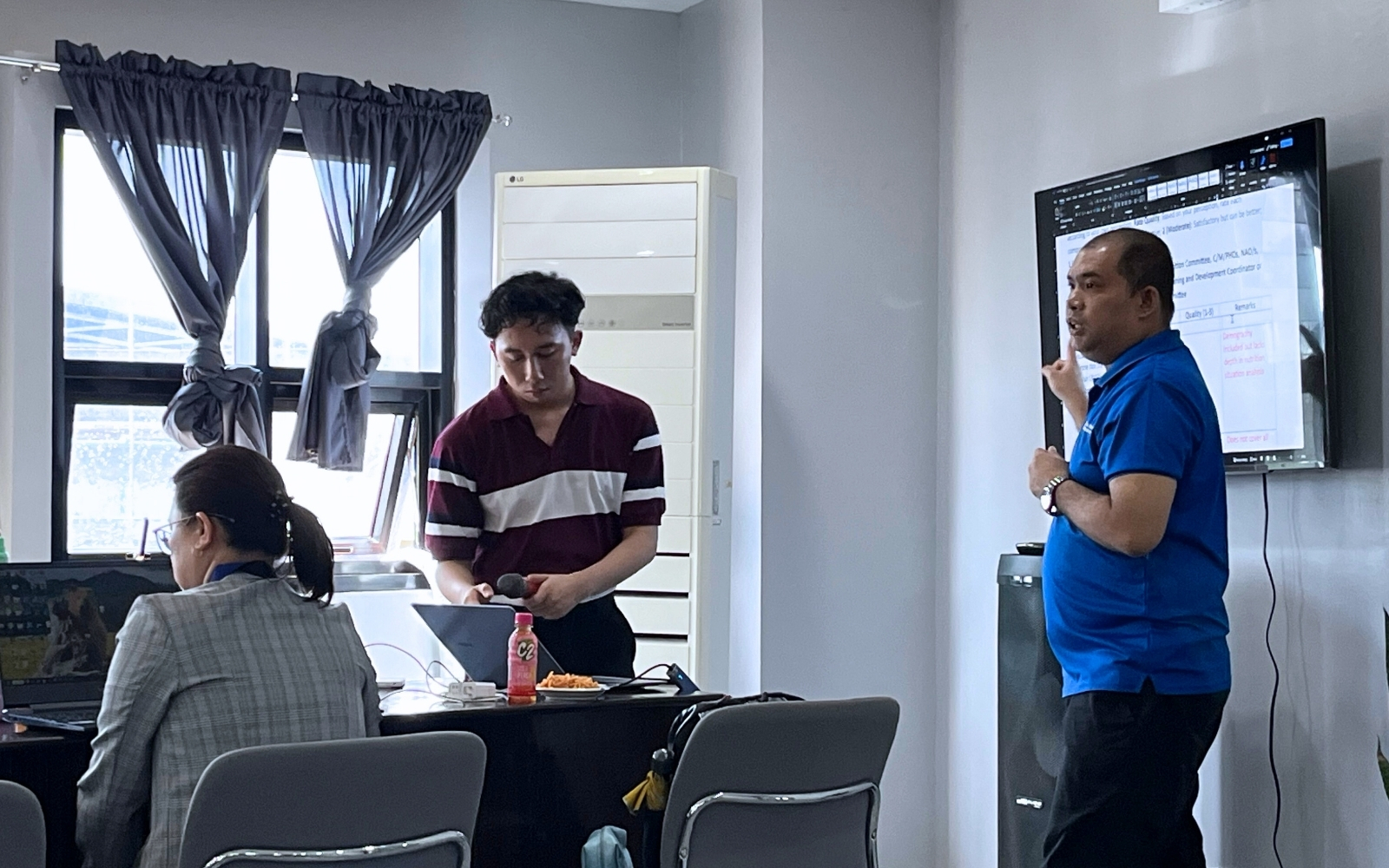
Governor Nilo Demerey Jr., an active participant in NutriLEAP, leads this initiative with a vision to establish equitable and sustainable nutrition governance. The assessment provided valuable insights from ground-level realities, enabling the province to refine its targets, resources, and interventions to better combat malnutrition—particularly among vulnerable groups like pregnant women and children under two years old.
Key outputs of the workshop included actionable steps to strengthen the PNAP over the next three years, ensuring a focused response to malnutrition. This initiative highlights the critical role of intersectoral collaboration, proactive planning, and robust monitoring and evaluation systems in achieving long-term nutrition goals.

Through NutriLEAP, Dinagat Islands reaffirms its commitment to transforming nutrition governance and securing healthier futures for its communities.